Editorials
‘REC’: The Found Footage Franchise That Revived a Genre

Anybody following Horror Press for the past year knows how much I love the V/H/S films (more on V/H/S/94 here, and V/H/S/99 here!). But if there’s one found footage series I care for even more than V/H/S; it’s REC.
What Is the REC Horror Series?
For the uninitiated, REC is a foreign series of horror films following the outbreak of a viral infection in a quarantined apartment in the heart of Spain, and its eventual spread outward. Written and directed by Jaume Balagueró, it begins with the tale of late-night news reporter Angela Vidal whose spotlight on Barcelona firefighters is interrupted during a routine call. After local authorities seal off the building due to a resident’s dog infecting an entire kennel with an unidentifiable contagion, all hell breaks loose as the people inside one by one succumb to the disease.
If you haven’t seen the film, spoilers ahead.
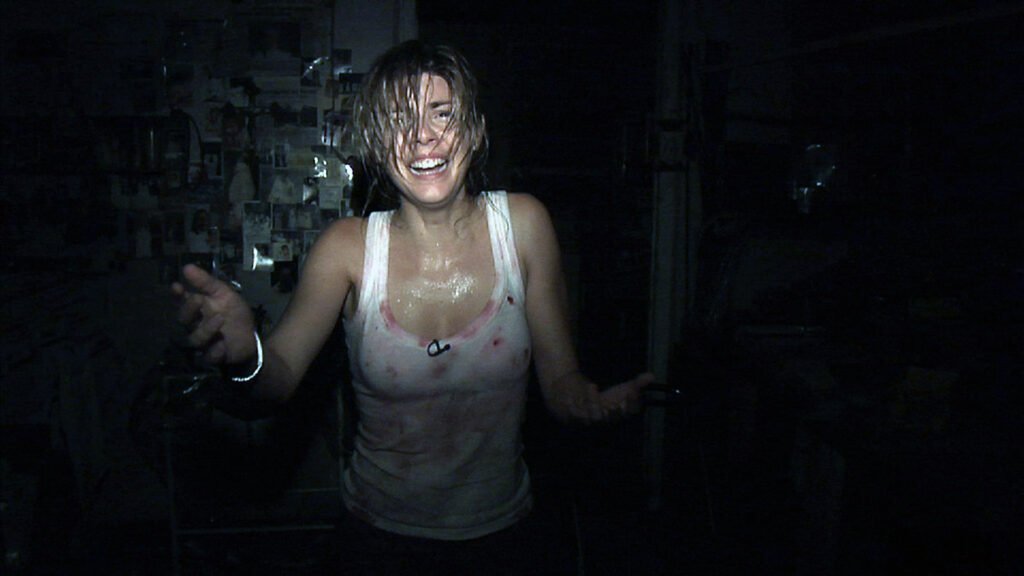
REC’s Unique Twist on Zombie and Possession Horror
A Demonic Virus Unleashed
As Angela finds herself inadvertently investigating the virus transmitted through violent maulings from feral, zombie-like victims, she finds out the penthouse of the apartment is host to a demonically possessed little girl, whose body has been warped by the part-disease, part-demon entity inside of her (portrayed by none other than now legendary creature actor Javier Botet in his first big breakout role).
Surprise, all the undead are also possessed!
Creative Horror Elements in REC
Besides being a neat twist on both possession and zombie films, Balagueró utilizes it in several fun ways; for one, all the undead look like their progenitor in mirrors, showing off that intrinsic demonic link. The most memorable of these details is a scene in REC 3 where the hordes of undead are unexpectedly paralyzed by a priest reciting a prayer over an intercom system, which blew my mind when I saw it for how clever it was. That’s not even counting the grotesque effects, like how La Niña Medeiros passes the main demon onto Angela. And as is to be expected, a few homages to The Exorcist & Evil Dead are scattered throughout for eagle-eyed viewers.
The Evolution of the REC Series
REC 3: Genesis – A Bloody, Fun Departure
As the series continued, its sense of escalation was best compared to the Resident Evil video games. If RECand REC 2 are the straight-laced and dire counterparts of the first two games, the closest comparison for REC 3: Genesis would be Resident Evil 4: it’s a roller coaster of bloody fun that mostly shirks off the found footage element as writer Paco Plaza takes the directing helm. Do you want a bootleg Spongebob evading demons or a chainsaw-wielding, blood-spattered bride? You watch REC 3.
Eat your heart out, Grace le Domas.
REC 4: Apocalypse – A Gory Finale
That film has little to do with the main storyline, but don’t worry: REC 4: Apocalypse is an excellent send-off for Angela and ramps up the stakes appropriately with explosions of blood so big they needed heavy-duty tarps on set, though this abandons the found footage aesthetic (it also takes place on a boat, which I guess makes it Resident Evil: Revelations?). It’s even more impressive how well it turned out with the technical constraints that Balaguero said made it a “nightmare” to shoot. The point is, you can pick any as your favorite, and I’ll understand why for any answer you give.
Why REC Deserves More Recognition
I never gave a fair shake to Balagueró’s magnum opus of viral demonic possession until I was older, always putting off watching the movies in high school since I made the fatal mistake many American horror fans do: I watched the terrible American remake, Quarantine, first. Not only did I miss out on possibly the best-found footage of the decade, but I also missed an essential piece of horror history.
Because the truth is, the genre owes way more to REC than just a few fun movies.

The Found Footage Dark Ages Before REC
The Post-Blair Witch Slump
Before REC there was…Not a whole lot worth talking about. At least in the years following the big dog of the genre, The Blair Witch Project. When it came to found footage post-1999, the name of the game was Blair Witch…until it wasn’t.
Subtlety flew out the window when studios realized that, from a profit perspective, Daniel Myrick & Eduardo Sánchez’s little masterpiece was a loud and resounding Civil War-era cannon that broke after firing once, not the money-printing machine gun they anticipated. You couldn’t replicate the cultural zeitgeist and perfect storm of events that made Blair Witch popular, but you could harvest some very base gimmicks. Looking at the found footage genre during the gap between Blair Witch 2 and the REC films, you’ll notice that the films popping up are all bland at best and hot messes at worst.
The Era of Disturbing Found Footage Flops
Yes, you have your “Blatant Blair Witch Rip-offs” with titles like The Dark Area and Blackwood Evil that recycle carbon copy plots. But more importantly, you have what eventually became the genre of detritus that is “Disturbing Found Footage Horror Movies” (see The Poughkeepsie Tapes, August Underground), trash solely existing to be on a listicle with other grotesque films that are the cinematic equivalent of a twelve-year-old boy saying slurs in an Xbox lobby.
The latter had the most impact, inspiring a wave of lukewarm, lurid pseudo-true-crime slop that struggles for verisimilitude, attempting to disgust the audience first and make a movie second. Being reminded what you’re watching is “ABSOLUTELY REAL AND TRUE FOOTAGE” never ends up helping the enjoyability of that fare. In fact, it made for what I’d consider the Dark Ages of Found Footage.
Rare Gems in the Found Footage Void
There is admittedly some good among all this bad: hits like Japan’s Noroi were made, finally getting its due in some online circles for being a genuinely terrifying film. There’s also the endlessly entertaining Behind the Mask: The Rise of Leslie Vernon, which took on the genre and made a one-of-a-kind horror mockumentary. But for every one of these, there were five forgettable flops.
Jaume Balagueró & Paco Plaza capitalized on the lack of truly thrilling found footage movies being made and squeezed a $2 million micro-budget to give back a sixteen-fold return on investment of $32.5 million. That cemented REC’s success and Balagueró cemented his movies as the pattern for great found footage on a commercial level.

REC’s Innovative Cinematography and Realism
REC’s carefully planned cinematography to simulate isolation tapped into that great fear found-footage’s realism can draw out, something that few others but The Blair Witch Project have successfully sold. Being shot entirely in real-time is a major element of what makes the film so tense to watch, along with little tricks like giving the actors incomplete scripts to force them to draw out more genuine reactions.
REC’s Influence on Modern Horror
The Ripple Effect of REC’s Success
Audiences responded, and after Quarantine replicated the success with a higher budget (though more modest returns), studios had to take note of how lucrative the genre could be. A pet theory of mine is that it was one of the REC series’ early contemporaries, Paranormal Activity, which was in the right place and time to run with that popularity and take theatres by storm.
Did REC Pave the Way for Paranormal Activity?
Not to discredit Oren Peli’s iconic movie; there’s a reason Paranormal Activity garnered much more widespread acclaim and supersaturated the market with found footage imitators. But I would go so far as to argue that most of the Paranormal Activity films probably wouldn’t exist were it not for the success of REC as a commercial release. Though Paranormal Activity hit the film festival circuit a month before the latter’s release, REC’s commercial success would have had a stronger reverberation. There’s a high likelihood this probably seeped into producer influence going forward.
Including the eyes of horror mogul Jason Blum.
Creator of Blumhouse.
You see where I’m going with this.
REC’s Legacy in the 2010s Found Footage Boom
Is it so hard to believe? That REC’s success begat Paranormal Activity being acquired by Paramount Pictures, and Paranormal Activity’s success begat more child successors than I have space in a single article to talk about? In a way, it’s fitting that one film about demonic possession acclaimed for its low-budget filmmaking would create the perfect conditions for…another film about demonic possession hailed for its low-budget filmmaking.
Looking past Paranormal Activity’s own hatchlings (which I will get to that series one day, believe me), the 2010s saw the likes of The Bay, Trollhunter, and of course, V/H/S repopulating the found footage landscape with great horror. I genuinely believe REC dragged found footage back up from its watery grave, and for that, we should be thankful.
Why You Should Watch the REC Series Today
So, the next time you’re about to pop a Grave Encounters into your Blu-ray player or open up Shudder to rewatch Gonjiam Haunted Asylum, consider giving some love to the re-animator of the genre and watch one of the REC films. If anything, you’ll at least have seen one of the best-found footage films to date.
Or, in the case of REC 4, a movie where they liquefy a monkey with a boat engine.
Editorials
‘The Woman in Black’ Remake Is Better Than The Original

As a horror fan, I tend to think about remakes a lot. Not why they are made, necessarily. That answer is pretty clear: money. But something closer to “if they have to be made, how can they be made well?” It’s rare to find a remake that is generally considered to be better than the original. However, there are plenty that have been deemed to be valuable in a different way. You can find these in basically all subgenres. Sci-fi, for instance (The Thing, The Blob). Zombies (Dawn of the Dead, Evil Dead). Even slashers (The Texas Chainsaw Massacre, My Bloody Valentine). However, when it comes to haunted house remakes, only The Woman in Black truly stands out, and it is shockingly underrated. Even more intriguingly, it is demonstrably better than the original movie.
The Original Haunted House Movie Is Almost Always Better
Now please note, I’m specifically talking about movies with haunted houses, rather than ghost movies in general. We wouldn’t want to be bringing The Ring into this conversation. That’s not fair to anyone.
Plenty of haunted house movies are minted classics, and as such, the subgenre has gotten its fair share of remakes. These are, almost unilaterally, some of the most-panned movies in a format that attracts bad reviews like honey attracts flies.
You’ve got 2005’s The Amityville Horror (a CGI-heavy slog briefly buoyed by a shirtless, possessed Ryan Reynolds). That same year’s Dark Water (one of many inert remakes of Asian horror films to come from that era). 1999’s The House on Haunted Hill (a manic, incoherent effort that millennial nostalgia has perhaps been too kind to). That same year there was The Haunting (a manic, incoherent effort that didn’t even earn nostalgia in the first place). And 2015’s Poltergeist (Remember this movie? Don’t you wish you didn’t?). And while I could accept arguments about 2001’s THIR13EN Ghosts, it’s hard to compete with a William Castle classic.
The Problem with Haunted House Remakes
Generally, I think haunted house remakes fail so often because of remakes’ compulsive obsession with updating the material. They throw in state-of-the-art special effects, the hottest stars of the era, and big set piece action sequences. Like, did House on Haunted Hill need to open with that weird roller coaster scene? Of course it didn’t.
However, when it comes to haunted house movies, bigger does not always mean better. They tend to be at their best when they are about ordinary people experiencing heightened versions of normal domestic fears. Bumps in the night, unexplained shadows, and the like. Maybe even some glowing eyes or a floating child. That’s all fine and dandy. But once you have a giant stone lion decapitating Owen Wilson, things have perhaps gone a bit off the rails.

The One Big Exception is The Woman in Black
The one undeniable exception to the haunted house remake rule is 2012’s The Woman in Black. If we want to split hairs, it’s technically the second adaptation of the Susan Hill novel of the same name. But The Haunting was technically a Shirley Jackson re-adaptation, and that still counts as a remake, so this does too.
The novel follows a young solicitor being haunted when handling a client’s estate at the secluded Eel Marsh House. The property was first adapted into a 1989 TV movie starring Adrian Rawlings, and it was ripe for a remake. In spite of having at least one majorly eerie scene, the 1989 movie is in fact too simple and small-scale. It is too invested in the humdrum realities of country life to have much time to be scary. Plus, it boasts a small screen budget and a distinctly “British television” sense of production design. Eel Marsh basically looks like any old English house, with whitewashed walls and a bland exterior.
Therefore, the “bigger is better” mentality of horror remakes took The Woman in Black to the exact level it needed.

The Woman in Black 2012 Makes Some Great Choices
2012’s The Woman in Black deserves an enormous amount of credit for carrying the remake mantle superbly well. By following a more sedate original, it reaches the exact pitch it needs in order to craft a perfect haunted house story. Most appropriately, the design of Eel Marsh House and its environs are gloriously excessive. While they don’t stretch the bounds of reality into sheer impossibility, they completely turn the original movie on its head.
Eel Marsh is now, as it should be, a decaying, rambling pile where every corner might hide deadly secrets. It’d be scary even if there wasn’t a ghost inside it, if only because it might contain copious black mold. Then you add the marshy grounds choked in horror movie fog. And then there’s the winding, muddy road that gets lost in the tide and feels downright purgatorial. Finally, you have a proper damn setting for a haunted house movie that plumbs the wicked secrets of the wealthy.
Why The Woman in Black Remake Is an Underrated Horror Gem
While 2012’s The Woman in Black is certainly underrated as a remake, I think it is even more underrated as a haunted house movie. For one thing, it is one of the best examples of the pre-Conjuring jump-scare horror movie done right. And if you’ve read my work for any amount of time, you know how positively I feel about jump scares. The Woman in Black offers a delectable combo platter of shocks designed to keep you on your toes. For example, there are plenty of patient shots that wait for you to notice the creepy thing in the background. But there are also a number of short sharp shocks that remain tremendously effective.
That is not to say that the movie is perfect. They did slightly overstep with their “bigger is better” move to cast Daniel Radcliffe in the lead role. It was a big swing making his first post-Potter role that of a single father with a four-year-old kid. It’s a bit much to have asked 2012 audiences to swallow, though it reads slightly better so many years later.
However, despite its flaws, The Woman in Black remake is demonstrably better than the original. In nearly every conceivable way. It’s pure Hammer Films confection, as opposed to a television drama without an ounce of oomph.
Editorials
Is ‘Scream 2’ Still the Worst of the Series?
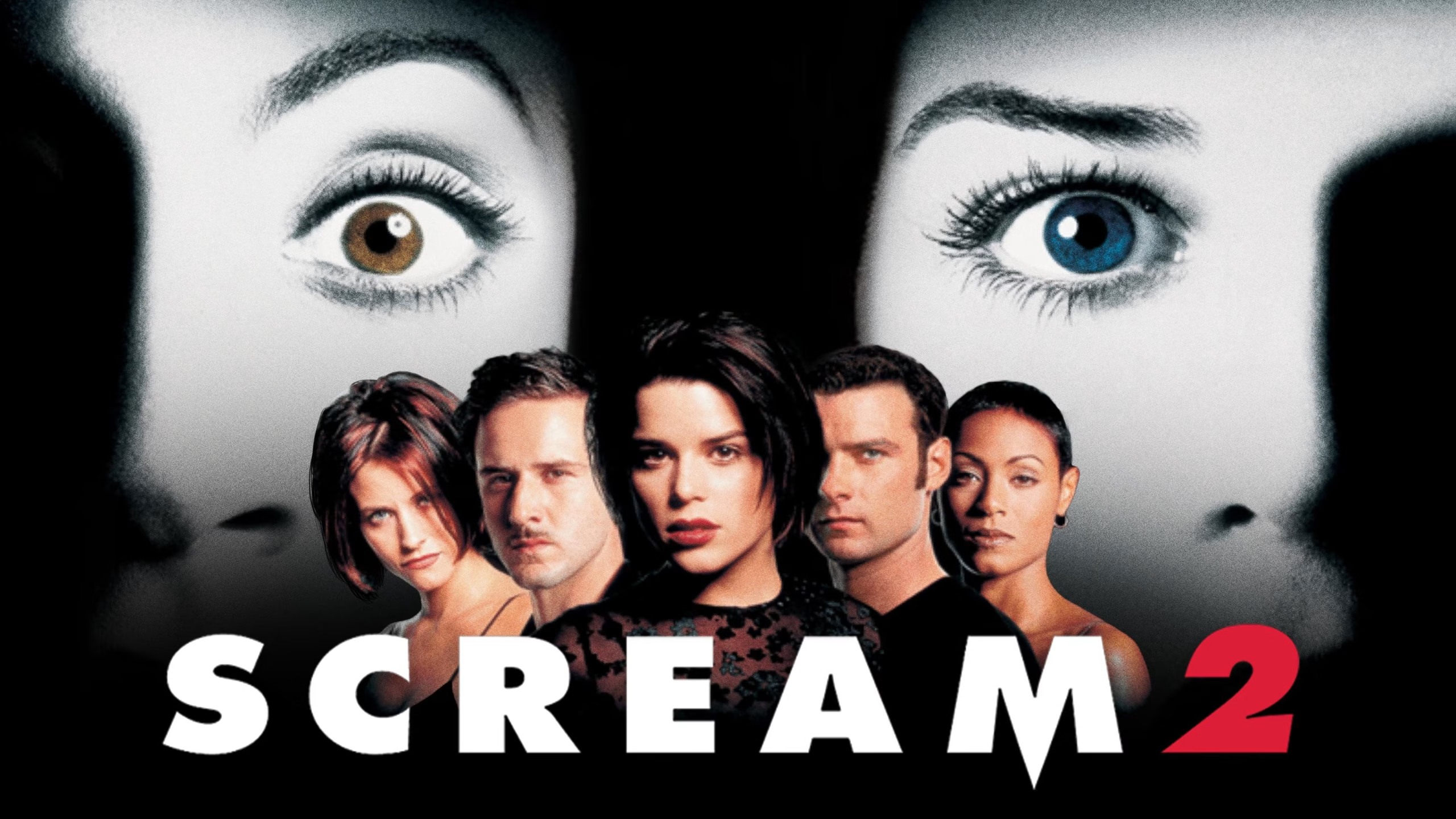
There are only so many times I can get away with burying the lede with an editorial headline before someone throws a rock at me. It may or may not be justified when they do. This article is not an attempt at ragebaiting Scream fans, I promise. Neither was my Scream 3 article, which I’m still completely right about.
I do firmly believe that Scream 2 is, at the very least, the last Scream film I’d want to watch. But what was initially just me complaining about a film that I disregard as the weakest entry in its series has since developed into trying to address what it does right. You’ve heard of the expression “jack of all trades, master of none”, and to me Scream 2 really was the jack of all trades of the franchise for the longest time.
It technically has everything a Scream movie needs. Its opening is great, but it’s not the best of them by a long shot. Its killers are unexpected, but not particularly interesting, feeling flat and one-dimensional compared to the others. It has kills, but only a few of them are particularly shocking or well executed. It pokes fun at the genre but doesn’t say anything particularly bold in terms of commentary. Having everything a Scream movie needs is the bare minimum to me.
But the question is, what does Scream 2 do best exactly? Finding that answer involves highlighting what each of the other sequels are great at, and trying to pick out what Scream 2 has that the others don’t.

Scream 3 Is the Big Finale That Utilizes Its Setting Perfectly
Scream as a series handily dodges the trap most horror franchises fall into: rehashing and retreading the same territory over and over. That’s because every one of its films are in essence trying to do something a little different and a little bolder.
Scream 3 is especially bold because it was conceived, written, and executed as the final installment in the Scream series. And it does that incredibly well. Taking the action away from a locale similar to Woodsboro, Scream 3 tosses our characters into the frying pan of a Hollywood film production. Despite its notorious number of rewrites and script changes (one of which resulted in our first solo Ghostface), it still manages to be a perfect culmination of Sidney Prescott’s story.
I won’t repeat myself too much (go read my previous article on the subject), but 3 is often maligned for as good a film as it turned out to be. And for all of its clunkier reveals, and its ghost mom antics, it understands how to utilize its setting and send its characters off into the sunset right.
Scream 4’s Meta Commentary Wakes Scream from a Deep Sleep
As Wes Craven’s final film, Scream 4 has a very special place in the franchise. It was and still is largely adored for bringing back the franchise from a deep 11-year sleep. With one of the craziest openings in any horror film, let alone a Scream film, it sets the tone for a bombastic return and pays off in spades with the journey it takes us on.
Its primary Ghostface Jill Roberts is a fan favorite, and for some people, she is the best to ever wear the mask. Its script is the source of many memorable moments, not the least of which is Kirby’s iconic rapid-fire response to the horror remakes question. And most importantly, it makes a bold and surprisingly effective return for our main trio of Sidney, Dewey, and Gale, whose return didn’t feel trite or hammy when they ended up coming back to Woodsboro for more.
Craven’s work on 4 truly understands the power its predecessors had exerted on the horror genre, both irreverent in its metacommentary and celebratory of the Scream series as a whole. The film is less of a love letter to the genre and more of a kicking down of the door to remind people what Scream is about. 4’s story re-established that Scream isn’t going away, no matter how long it takes for another film, and no matter how many franchises try to take its place.
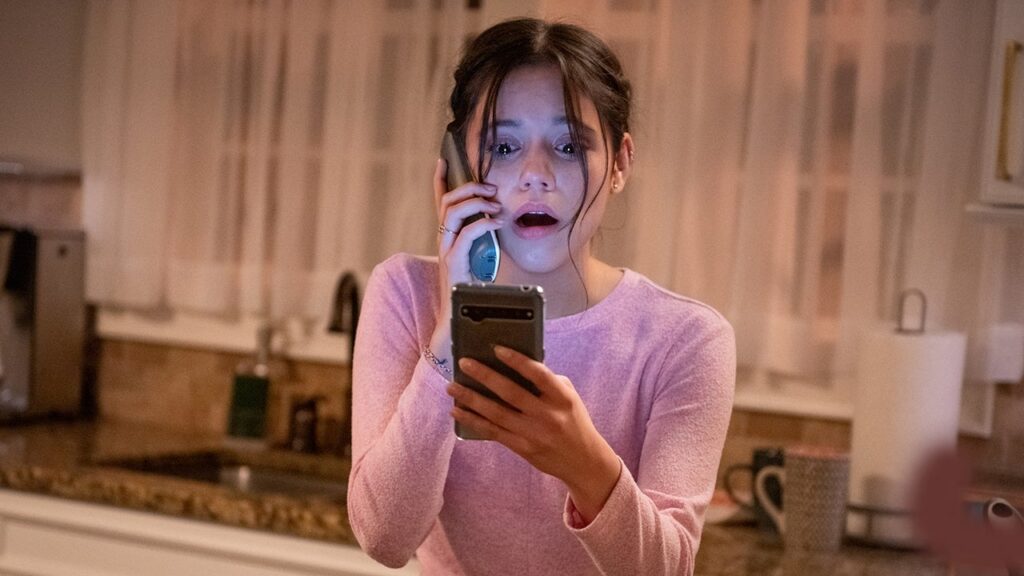
Scream 5 & 6 Is Radio Silence’s Brutal and Bloody Attitude Era
Put simply, Scream 5 and 6’s strong suit was not its characters. It was not its clever writing. The Radio Silence duology in the Scream series excelled in one thing: beating the hell out of its characters.
Wrestling fans (of which there is an unsurprising amount of crossover with horror fans) will know why I call it the Attitude Era. Just like WWE’s most infamous stretch of history, Radio Silence brought something especially aggressive to their entries. And it’s because these films were just brutal. Handing the reins to the series, Bettinelli-Olpin and Gillet gifted a special kineticism to the classic Scream chase sequences, insane finales, and especially its ruthless killers.
All five of the Ghostfaces present in 5 and 6 are the definition of nasty. They’re unrelenting, and in my humble opinion, the freakiest since the original duo of Stu Macher and Billy Loomis. Getting to hear all the air get sucked out of the room as Dewey is gutted like a fish in 5 was still an incredible moment to experience in theatres, and it’s something I don’t think would have happened if the films were any less mean and any less explosively violent.
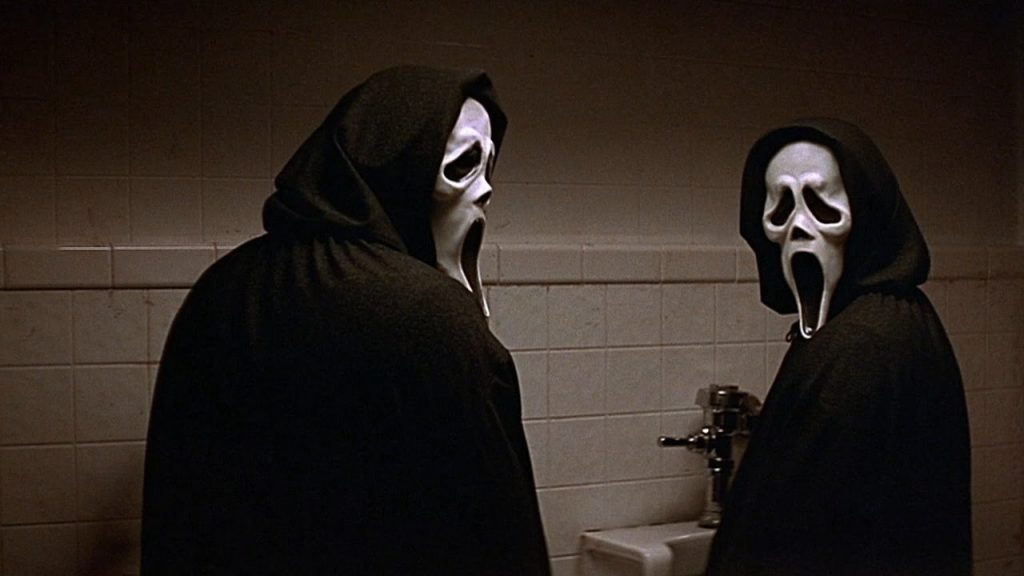
So, What Does Scream 2 Do Best Exactly?
So now, after looking at all these entries and all of their greatest qualities, what does Scream 2 have that none of the others do? What must I concede to Scream 2?
Really great character development.
Film is a medium of spectacle most of the time, and this is reflected in how we critique and compliment them. It affects how we look back on them, sometimes treating them more harshly than they deserve because they don’t have that visual flash. But for every ounce of spectacle Scream 2 lacks, I have to admit, it does an incredible job of developing Sidney Prescott as a character.
On a rare rewatch, it’s clear Neve Campbell is carrying the entirety of Scream 2 on her back just because of how compelling she makes Sidney. Watching her slowly fight against a tide of paranoia, fear, and distrust of the people around her once more, watching her be plunged back into the nightmare, is undeniably effective.
It’s also where Dewey and Gale are really cemented as a couple, and where the seeds of them always returning to each other are planted. Going from a mutual simmering disrespect to an affectionate couple to inseparable but awkward and in love is just classic; two people who complete each other in how different they are, but are inevitably pulled back and forth by those differences, their bond is one of the major highlights throughout the series.
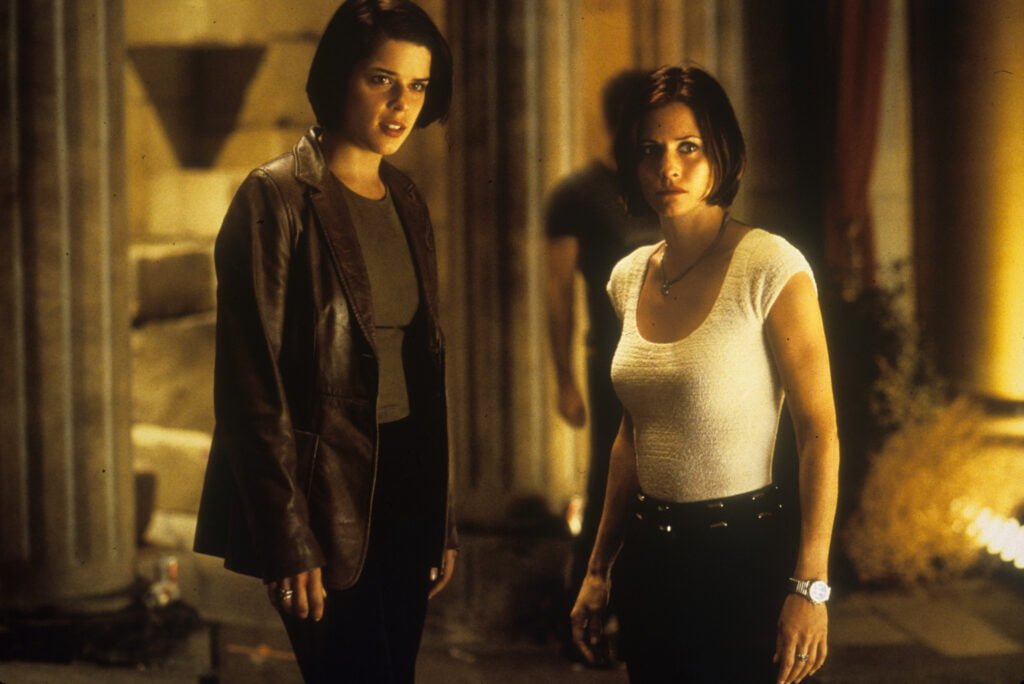
Maybe All the Scream Films Are Just Good?
These three characters are the heart of the series, long after they’ve been written out. I talk a big game about how Scream 3 is the perfect ending for the franchise, but I like to gloss over the fact that Scream 2 does a lot of the legwork when it comes to developing the characters of Dewey, Gale, and especially Sidney.
Without 2, 3 just isn’t that effective when it comes to giving Sidney her long deserved peace. Without 2, the way we see Sidney’s return in 4 & 5 doesn’t hit as hard. All of the Scream movies owe something to Scream 2 in the same way they owe something to the original Scream. I think I’ve come to a new point of view when it comes to the Scream franchise: maybe there is no bad entry. Maybe none of them have to be the worst. Each one interlinks with the others in their own unique way.
And even though I doubt I will ever really love Scream 2, it has an undeniable strength in its character writing that permeates throughout the whole franchise. And that at the very least keeps it from being the worst Scream film.























